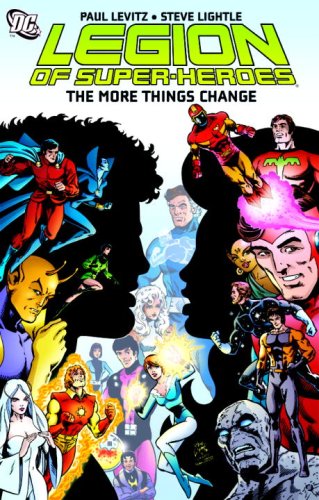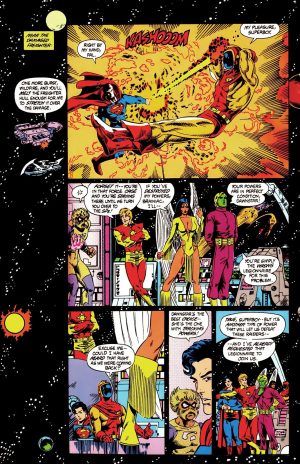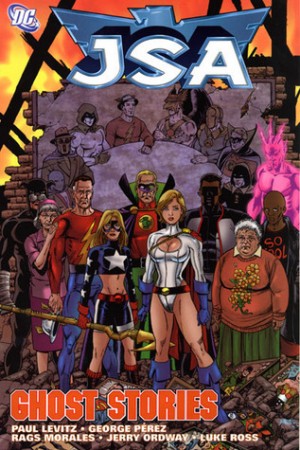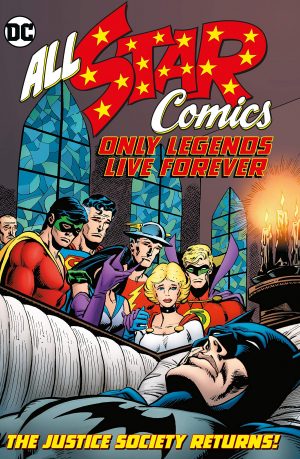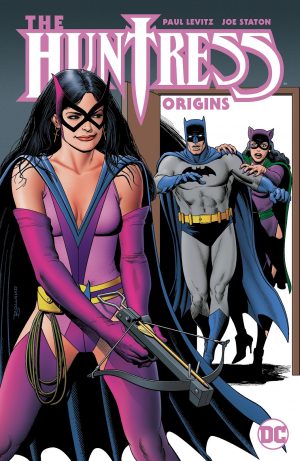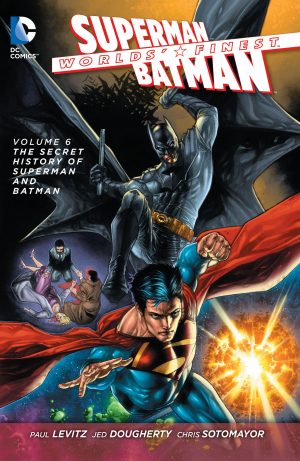Review by Frank Plowright
This stage in the Legion of Super-Heroes’ 1980s continuity is when Paul Levitz began to miss the contributions of his recent collaborator Keith Giffen. Giffen had the greater imagination, and although Levitz pulls off the character moments, the plots are more straightforward and lacking many surprises. The More Things Change begins with a team of Legionnaires lost on a strange planet converted into one giant factory, while the remainder mop up the super-villains still at large after An Eye for an Eye.
Levitz leads readers from adventure to adventure via those character moments, Element Lad’s romance, or Timber Wolf inheriting the estate of the late Karate Kid, and a strength is being able to keep on top of such a large cast, as those character moments are frequently awkward. Perhaps there are fans of some characters who’ll feel short-changed, but over seven chapters a surprising number are given a turn in the spotlight. Levitz is crowd-pleasing when it comes to the functions of the team also, with a leadership election and a membership drive.
Most events are pencilled by Steve Lightle, whose art has dynamism and detail, but he’s inconsistent, and some action pages are very crowded. At his absolute best, such as a spread with a decorative border showing assorted Legionnaires on off-duty activities, he can be memorable, but that’s not very often. Ernie Colón’s chapters are a little old-fashioned, but there’s a draughtsman’s clarity and simplicity to the layouts. Fans of Giffen’s illustration are given a tantalising glimpse of what had been in a Bouncing Boy solo. The colour is very much of its era, down to the frequent use of colour overlays without black border lines to indicate some technological wonder.
What’s supplied were solid enough superhero stories in 1987, but haven’t aged very well. They’re likely to have greater appeal to nostalgic Legion of Super-Heroes fans than a general audience.
